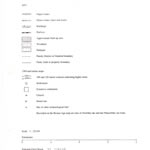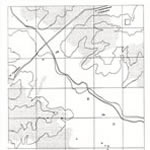The Maps of David Spence Showing Lemsford Parish over many centuries

Enjoy Lemsford Local History Groups selection of Historic Maps
 The David Spence Maps are part of Lemsford Local History Groups Archives. The copyright belongs to David Spence and it is forbidden to copy any of the images.
Its shows the changing shape of the Lemsford area over many centuries the image to the left shows the introduction by David Spence where he credits the people and organisations that have made this collection possible.
CLICK ON IMAGES TO ENLARGE
The David Spence Maps are part of Lemsford Local History Groups Archives. The copyright belongs to David Spence and it is forbidden to copy any of the images.
Its shows the changing shape of the Lemsford area over many centuries the image to the left shows the introduction by David Spence where he credits the people and organisations that have made this collection possible.
CLICK ON IMAGES TO ENLARGE

Sources & Notes
The David Spence Maps Sources & notes.The copyright belongs to David Spence and it is forbidden to copy any of the images.

The Key to the Maps
The Key to the David Spence Maps

Bronze Age in Lemsford
The beginning of the Bronze Age in Britain can be put around 2,000 BC. Although not certain, it is generally thought that the new bronze tools and weapons identified with this age were brought over from continental Europe. The skulls recovered from burial sites from the Bronze Age are different in shape from Stone Age skulls. This would suggest that new ideas and new blood were brought over from the continent. Stone and bronze can be used together, subject to the availability of both materials. True bronze is a combination of 10% tin and 90% copper. Both materials were readily available in Britain at this time.Source BBC

The Iron Age in Lemsford
The Iron Age of the British Isles covers the period from about 800 BC to the Roman invasion of 43 AD, and follows on from the Bronze Age. As the name implies, the Iron Age saw the gradual introduction of iron working technology, although the general adoption of iron artefacts did not become widespread until after 500-400 BC. As the Iron Age progressed through the first millennium BC, strong regional groupings emerged, reflected in styles of pottery, metal objects and settlement types. In some areas, 'tribal' states and kingdoms developed by the end of the first century BC.Source BBC

The Romans in Lemsford
The invasion of Britain was a war of prestige. The 'mad' emperor Caligula had been assassinated in 41 AD, and an obscure member of the imperial family, Claudius, had been elevated to the throne. The new emperor faced opposition from the Senate, Rome's House of Lords. Claudius needed a quick political fix to secure his throne. What better than a glorious military victory in Britain?.Source BBC

The Year 1000 in Lemsford
The Maps of David Spence Showing Lemsford Parish 1000

The Year 1100 in Lemsford
The Maps of David Spence Showing Lemsford Parish 1100

The Year 1200 in Lemsford
The Maps of David Spence Showing Lemsford Parish 1200

The Year 1300 in Lemsford
The Maps of David Spence Showing Lemsford Parish 1300

The Year 1400 in Lemsford
The Maps of David Spence Showing Lemsford Parish 1400

The Year 1500 in Lemsford
The Maps of David Spence Showing Lemsford Parish 1500

The Year 1600 in Lemsford
The Maps of David Spence Showing Lemsford Parish 1600

The Year 1700 in Lemsford
The Maps of David Spence Showing Lemsford Parish 1700

The Year 1800 in Lemsford
The Maps of David Spence Showing Lemsford Parish 1800

The Year 1850 in Lemsford
The Maps of David Spence Showing Lemsford Parish 1850

The Year 1900 in Lemsford
The Maps of David Spence Showing Lemsford Parish 1900

The Year 1925 in Lemsford
The Maps of David Spence Showing Lemsford Parish 1925

The Year 1950 in Lemsford
The Maps of David Spence Showing Lemsford Parish 1950

The Year 1975 in Lemsford
The Maps of David Spence Showing Lemsford Parish 1975

The Year 1990 in Lemsford
The Maps of David Spence Showing Lemsford Parish 1990
The Lemsford Local History Group, Has a large selection of historic maps to see full range Click Here

The Lemsford Local History Group, formed in 2001, is interested in all aspects of the history and the people of this area - both ancient and modern. We welcome correspondence from anyone who shares this interest.The group archives now include a significant number of photographs and documents, as well as records of baptisms (to 1985), marriages (to 1970), burials (to 2003) and memorial inscriptions (to 2003) from the St John's parish church registers. Records of births, marriages and deaths before the consecration of the church in 1859 will be found in the registers of Bishop's Hatfield parish. The archive also contains admission records for the village school - St. John's Church of England Junior Mixed Infants school - since it was first opened in 1872

